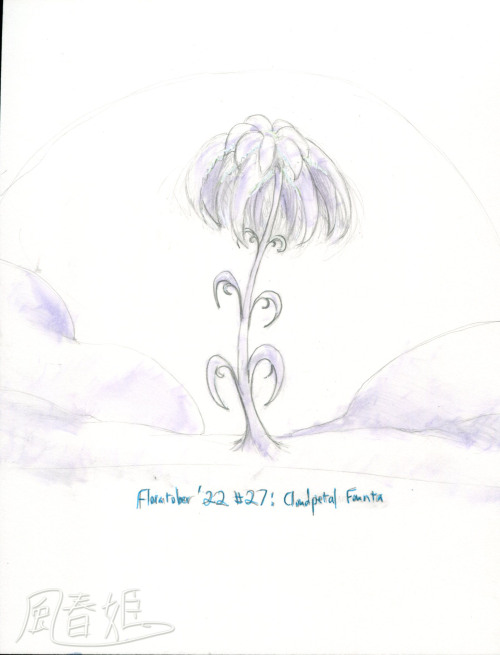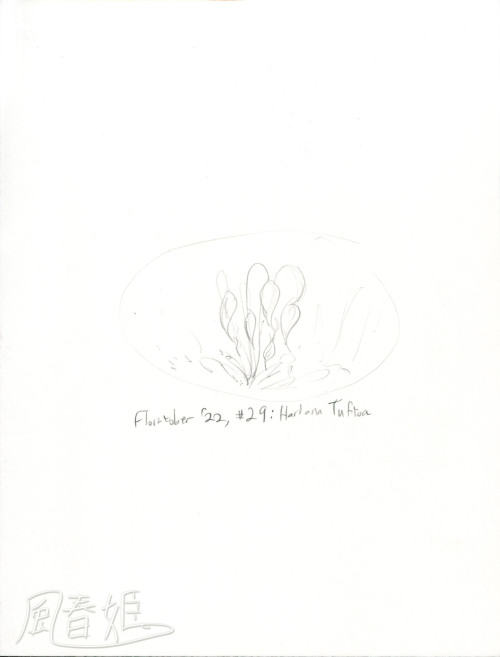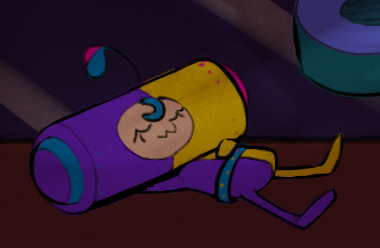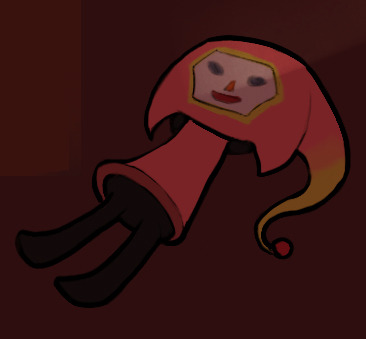Cloudpetal Founta



Cloudpetal Founta
A relative of the Biminia Cloudpetal, Cloudpetal Fountas look a bit more tree-like, with large, drooping leaves like palm branches. The 'petals' of the Cloudpetal Founta are actually soft seedpods that contain still more cotton within them. The softest garments made by Fashion Buddys often use the inner cotton from Cloudpetal Founta seedpods.
-
 homosepiens liked this · 2 years ago
homosepiens liked this · 2 years ago -
 ciscandocinza liked this · 2 years ago
ciscandocinza liked this · 2 years ago -
 toothpaste-dragon liked this · 2 years ago
toothpaste-dragon liked this · 2 years ago
More Posts from Kazeharuhime



Whitia Boubou
A rare flower found in north Wing Alayna, the Whitia Boubou produces a white nectar that, when set out to air, slowly hardens into a cheese-like substance. It has a sweet note to it and the consistency of the hardened nectar is still a bit liquidy like fresh mozzarella, ricotta and other fresh cheeses. Though considerably a rare commodity, it has quite a following for the many applications that its nectar can be used for, and wherever it is found, it is seldom found without Jara Flora set out to collect the nectar that falls from its dangling flowers.






The Autograph Part 2-7
To wrap up we have the rest of the sketches for the little comic for @chrystallink, featuring her chars Clysmia, Blake, Cider, and Fahrenheit. Hailey and Dia's persona are also featured in line on the third (second here) page, and the latter a little bit on page 6 (image 5), but they're hard to see. And of course, my joke char Bob the Faceless Gaunto. XD



Hariana Tuftoa
A species of Hariana found in Furheart Iiah. They are much softer than their Fulinean counterparts, who have stiffer, more petal-like bristles than their Furheartian counterparts. Because of this difference in texture, it is sometimes argued that they are in fact not a Hariana at all, but much more closely related to something like the Gloagli Lavilav, with its thin, curled stems and hanging flowers. It has thus been proposed to be renamed the Furheartian Tuftoa, but as it also has many differences from other Tuftoas growing in Furheart Iiah as well, even its second name has also been thrown into question. So it is still up for debate whether it should be classified under the Harianan or Tuftoan family, or even one closer to the Gloagli Lavilav due to their similarities.
Nomenclature aside, Hariana Tuftoa 'fur' is quite popular with Fashion Buddys, especially those who travel and need warmer coverings against the sailing winds.

First attack of the year! It took me forever to complete because there's lots of little hidden details. Featuring @chrystallink's Clysmia, Blake and Cider, as told from the perspective of my fan Gaunto character. We'll see if I can get any more of this done before ArtFight is over. Took way longer than anticipated. Hidden details under the cut.
Hidden characters!! @quarkycadet's Pogo (didn't realize you weren't participating this year rip!!)

Yanderedile (offsite)'s Plum! There's gonna be a lot of Katamari OCs because they're perfect for hiding in places :)

So colorful! Wish all these guys weren't hidden in the dim lighting. I'll have to do a proper attack of all these guys someday. XD; @jestersunite's Crumb!

Now we're getting into the very hidden characters, mostly obscured by figures in the last panel XD; @madame-photon's Octavia, who got almost completely obscured by Blake. You can see a little bit of her form between Blake's shoulder and his hair. Love her design too, I've got to do her justice someday :')

@kirobotdx's Kijori, who ended up getting pretty much entirely obscured in the end. There's a tiny bit of his head visible under Cider's head and beside Blake's shoulder. :') I've got to better with him next time.

Now for other secrets/cool things!
I really like how this poster came out. You can see most of it, but I thought I'd give it a spotlight here.

The record player! I'm thinking it's Clysmia's brand ;3

The VCR/DVD player

Friends' stories on book/(album?) covers





Taking a bit of a left turn on the usual formula since I'm running low on traditional plants in the compendium (theoretically still have enough to make it through, but motivation towards those remaining is low).
Haven't talked a whole lot about Buddys (tis the species name so funny spelling) here lately, so a lot of this info may come out of left-field or be hard to contextualize, but here goes.
Flower Buddy Lilypods
Also known by their more scientific name, Flowering Amicans, Flower Buddys are a unique species of Buddy that are born from Lilypods, as featured here. As they're an accessory to Flower Buddys themselves, Lilypods deviate from the traditional model of flora categorization quite a bit, and as such aren't typically listed in flora compendiums. Nevertheless, seeing as they are very much like flora, they could be counted in an annex of an extended compendium in theory.
Lilypods are found naturally in the Flower Buddy Dimension. The first Flower Buddys grew there inside their Lilypods and emerged into the world proper along the coast of Reline Ah, where the Flower Buddy Dimension is connected to. Flower Buddys used to be a lot more outgoing, sailing to many different places on their Lilypads and sleeping in their pods at night. However, after the first Shadow Buddy War, the Flower Buddys retreated back to Fuline Ah and hid there for many years. Some millennia later, brave new Flower Buddys emerged from their dimension and began to explore again. Though there are thought to be others still living on the continent in seclusion, brave explorers are still few. Though they emerge now and then from their dimension, Flower Buddys are still scarcely seen worldwide in JI proper.
As for the Lilypods themselves, Lilypods can be manipulated by the Flower Buddy born from them and have two forms: Pod and Pad Form. Pod Form is featured above as is the Lilypod's default state. When Flower Buddys wish to use their Lilypods to sail without their natural reeds getting in the way, they can will the reeds to recede back into the center of the Lilypad. They can will the reeds back up when they wish to sleep or hibernate within their Lilypods, and can control the internal environment of the pod depending on if they want to sleep for a night or much longer.
Being an extradimensional plant, Lilypods' needs are quite different from a traditional plant's. They are sustained primarily by the dimension itself, sometimes even while outside it, though they may change to a darker shade of green and act a bit more 'sluggish' when apart from their home dimension. When in an environment suited to their needs, they can also rely on it for nutrition in a similar way that they do in their home dimension. They prefer a medium temperature, rich sediment, dispersed light, and for their roots to always be submerged in water. When any of these conditions are not met, they can rely on their connection to their home dimension to provide for them, but as mentioned before, may change appearance and act 'sluggish' by comparison depending on how out of their element they are.
Lilypods can only spawn in their home dimension, and do so independently of Flower Buddys themselves. Flower Buddys themselves bare children the normal Buddy way via Heartegg (though there is scarce documentation about this due to Flower Buddys' reclusive nature and dubious success rate, especially with non-plant species partners) and may select an empty Lilypod for their child to mature in back at the dimension. For this reason, Flower Buddys developed this way may or may not know who their parents are as they emerge from the Lilypod fully mature. That said, not all Flower Buddy pairings choose this method, or may only make use of it for the duration of fetal development, so some Flower Buddy hybrids may indeed be raised by their parents in a more traditional manner.
The Flower Buddy dimension itself is an expanse of water and mist with no discernible sun, though it may still have a day-night cycle that corresponds with JI's day-night cycle. Anything else in the dimension is constructed by Flower Buddys or whoever else has found their way there, typically Flower Buddy partners. There are no other known flora that grow there aside from Lilypods, though there are likely microorganisms and perhaps fish, but there has not been much research in that area as of yet.